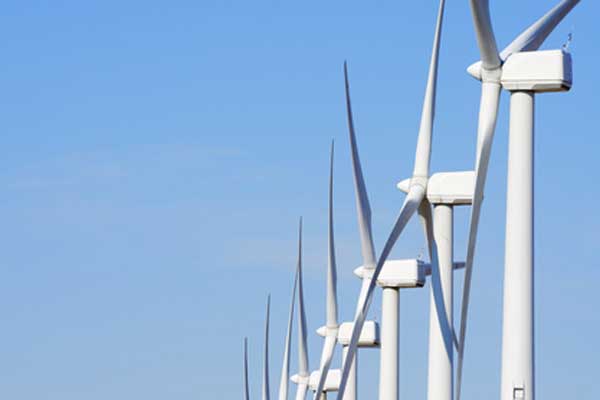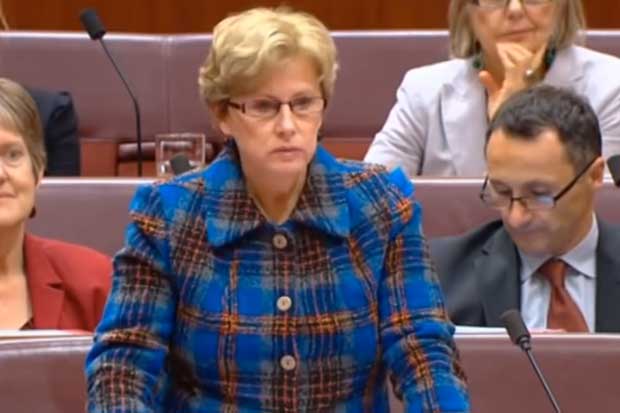Yesterday, the government met with industry representatives to make them an offer on the Renewable Energy Target (RET).
Labor wasn’t invited, and the Greens have made it clear they don’t support any cuts.
The crossbenchers may soon be inundated with texts, and the word impasse is on track to be the most used in reportage of the ill-fated subsidy scheme. Key deadlines are drawing nearer.
Meanwhile, the Coalition continues to proclaim new and ever more astounding up-shots for working families brought on by their historic victory over the carbon tax.
And the whole shonking mess shudders on.
These games were unceremoniously opened in February last year when Dick Warburton, a self-professed climate sceptic, was appointed to review the RET.

As you might expect, the market also became skeptical… of investing in the renewables sector. When the government announced in August it wanted to slash the RET by nearly half, investment tanked.
In all, 2014 saw an 88 per cent reduction in investment in large-scale renewables.
While the number of meetings held and letters sent has escalated in recent weeks, investment continues to sink. Like a mammoth in a tar pit.
Yesterday the government offered industry a ‘take-it or leave-it’ deal which would see the Renewable Energy Target cut to 32,000GWh.
Broadly speaking, this ‘target’ is the amount of total electricity, measured in Gigawatt hours(GWh), that the government mandates must be sourced from renewables like wind and solar each year, through a system of carbon credits.
The original target of 41,000GWh by 2020, legislated in 2009, has since become the subject of a bizarre and unfortunate debate.
Why though, when the target has not yet changed, has investment dived so drastically?
Labor, the renewables industry, the Greens and – on appearances – the crossbenchers, think it ought to stay just where it is. A cool 41,000GWh.
Despite this support, legislation does little to mitigate the uncertain politics of the government’s hostility towards the target, climate-sceptic reviewers, and the ever-present threat of an unpredictable crossbench.
It wasn’t always this way, though.
When the initial Howard government scheme was expanded in 2009, and it was thought the 41,000GWh figure would make up 20 per cent of electricity demand by 2020, the talk was all about investment certainty.
Daisies, wind farms, and solar would grow in perfect harmony. Everyone agreed.
The honourable Liberal MP, Andrew Laming (pictured below), summed up the tri-partisan mood, that industry “needs such a target to have the certainty to invest”, neatly at the time.
“By giving business certainty we can allow them to plan ahead, they can look forward and they can make the decisions that in the end are going to be right for the consumer,” he said during the Bill’s passage through parliament.

In the actual event, electricity demand was lower than expected and the proportion of electricity set to be made up by renewables under the 41,000GWh target will actually be around 26 per cent, if the RET continues unchanged.
After the Warburton review the government announced they wanted to scale down the target to a ‘real 20 per cent’ of total demand. The meetings, letter writing, and general lack of consensus began in earnest.
By all accounts of yesterday’s meeting, the government has been dragged up from 27,000GWh – their ‘real 20 per cent’ position – to 32,000GWh.
Industry, it seems, has refused.
Locked out, Laborites are grinding their teeth and counting the days ‘till an election, and the Greens are urging further inaction on the target because the government needs numbers in parliament to make changes.
As the flight-count of industry reps heading to Canberra climbs, key dates are approaching, which is why efforts to broker a deal have had an ostensible giddy-up recently.
Shadow Environment Minister, Mark Butler, said last week he is trying “to bring this matter to a head this fortnight,” because industry “really now is a hostage of the ability of the Government to land a broader deal around renewable energy”.
This is particularly true of the emissions intensive sector – “aluminium, cement and some other industries”.
“Their liabilities under this program crystalise over the next two weeks.
“For aluminium that amounts to about $50 million,” Butler said.
However after Industry Minister Ian Macfarlane’s ‘take-it-or-leave-it’ 32,000GWh offer yesterday, Butler is holding firm.
“The industry and the finance sector have said it is a completely unsustainable position,” he said.
The stance of the renewables industry and Labor, in the latest bout of negotiations, has consistently been that a compromise of at least 35,000GWh is needed to strike a deal.
Greens Leader, Christine Milne, has argued for the investment and jobs the RET would continue to generate.
“An offer of 32,000GWh is an offer to destroy the renewable energy industry, prevent billions of dollars of investment and new jobs, make global warming worse, and push up everyone’s electricity bills,” a dismissive Milne last week.

The government continues its related attempts to abolish the Australian Renewable Energy Agency – which still has more than half of the $2.5 billion in funding it was allocated in 2011 to spend. Meanwhile, the 19,000 new jobs which had been projected to accompany the RET to 2020 hang in the balance.
As the war of words drags on, Milne, referencing a report from the Australian Conservation Foundation, has questioned the government’s commitment to renewables.
“The ACF report out today shows the biggest polluters, driving global warming in Australia, are the coal-fired generators,” she said.
“But the Liberals want to protect their profits and keep us reliant on them for as long as possible.”
That same report showed that Energy Australia, which has substantial fossil fuel interests, was the nation’s biggest contributor to greenhouse gas emissions.
Like the Abbott government, Energy Australia wants to slash the target, which was leading to an oversupply of electricity in the market and making it more difficult for unsubsidised fossil fuel reliant generators to compete.
“In our view, recalibration of the RET to equate to the original ‘20 per cent by 2020’ policy commitment is the most balanced approach to addressing the problem for all stakeholder groups,” the company said in its submission to the Warburton Review.
Modelling from the Climate Institute shows that if the RET was cut to a ‘real 20 per cent’, Energy Australia would profit by $1.9 billion out to 2030, while coal companies collectively would pocket an additional $8 billion.
Unfortunately, though, if the government really isn’t budging on their latest 32,000GWh offer, there will be no clear winners.
In all likelihood the target will remain at the currently legislated 41,000GWh. Aluminium and concrete producers may be slapped with unnecessary imposts. Investment uncertainty will continue to hobble the renewables sector. Meetings will be had, letters will be written.
Nobody’s happy, and the circus lumbers on.
Donate To New Matilda
New Matilda is a small, independent media outlet. We survive through reader contributions, and never losing a lawsuit. If you got something from this article, giving something back helps us to continue speaking truth to power. Every little bit counts.



